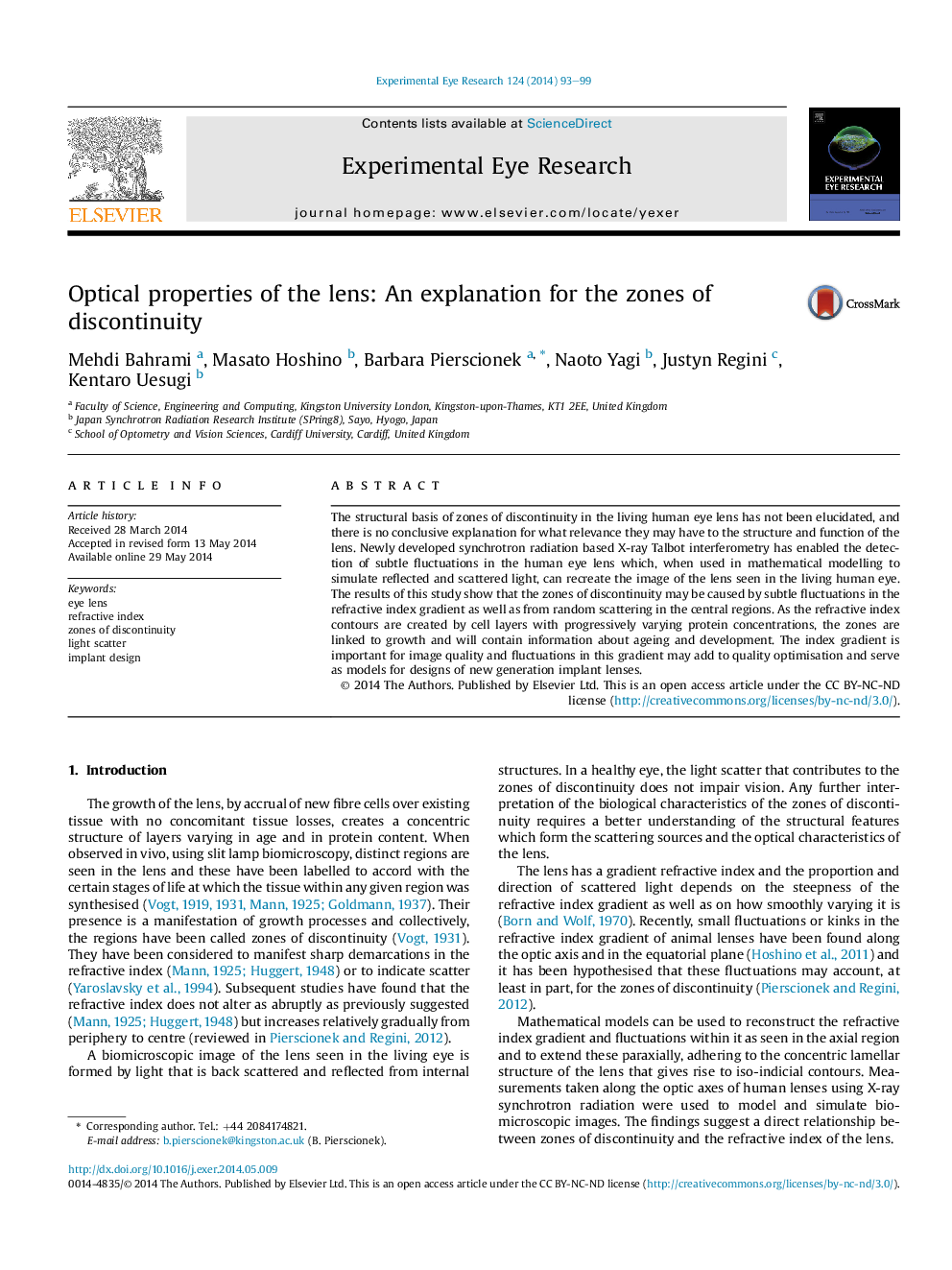| کد مقاله | کد نشریه | سال انتشار | مقاله انگلیسی | نسخه تمام متن |
|---|---|---|---|---|
| 6196896 | 1602598 | 2014 | 7 صفحه PDF | دانلود رایگان |
- The refractive index of the human eye lens has subtle fluctuations.
- The presence of a gradient index creates a dark shadow in the reflectance pattern.
- Zones of discontinuity can be simulated from reflected and randomly scattered light.
- The peripheral zones are generated by fluctuations in the refractive index profile.
- Random scattering contributes to central zones.
The structural basis of zones of discontinuity in the living human eye lens has not been elucidated, and there is no conclusive explanation for what relevance they may have to the structure and function of the lens. Newly developed synchrotron radiation based X-ray Talbot interferometry has enabled the detection of subtle fluctuations in the human eye lens which, when used in mathematical modelling to simulate reflected and scattered light, can recreate the image of the lens seen in the living human eye. The results of this study show that the zones of discontinuity may be caused by subtle fluctuations in the refractive index gradient as well as from random scattering in the central regions. As the refractive index contours are created by cell layers with progressively varying protein concentrations, the zones are linked to growth and will contain information about ageing and development. The index gradient is important for image quality and fluctuations in this gradient may add to quality optimisation and serve as models for designs of new generation implant lenses.
167
Journal: Experimental Eye Research - Volume 124, July 2014, Pages 93-99
